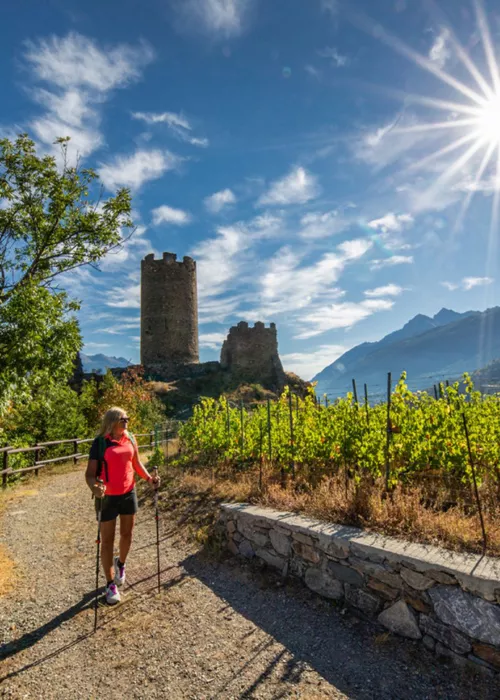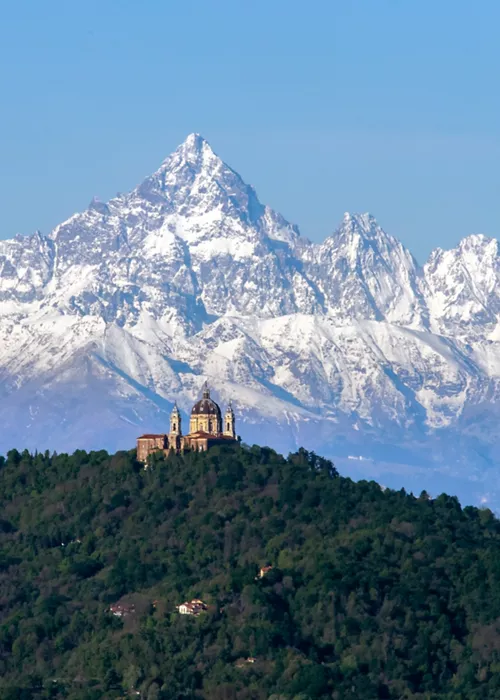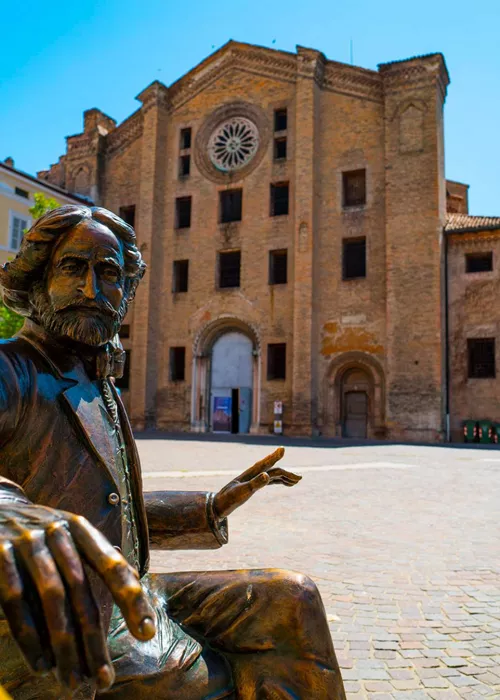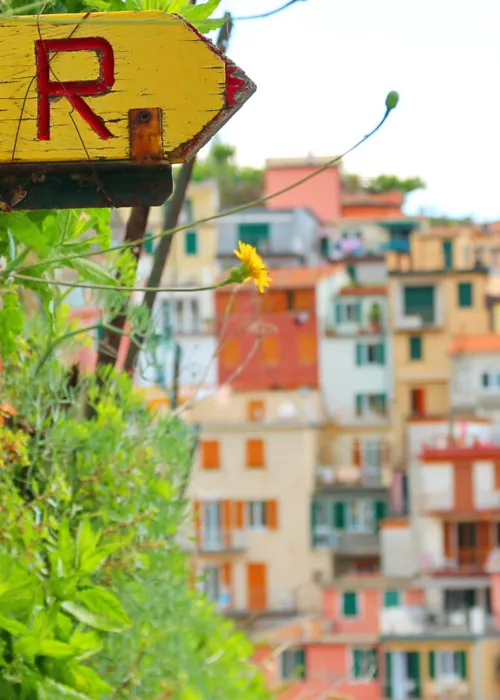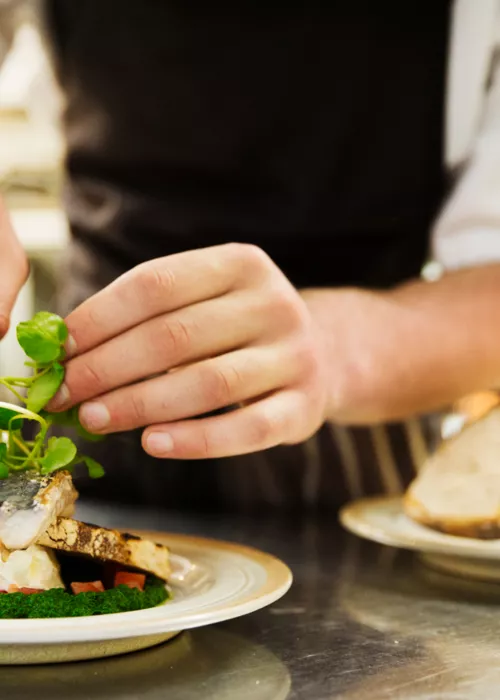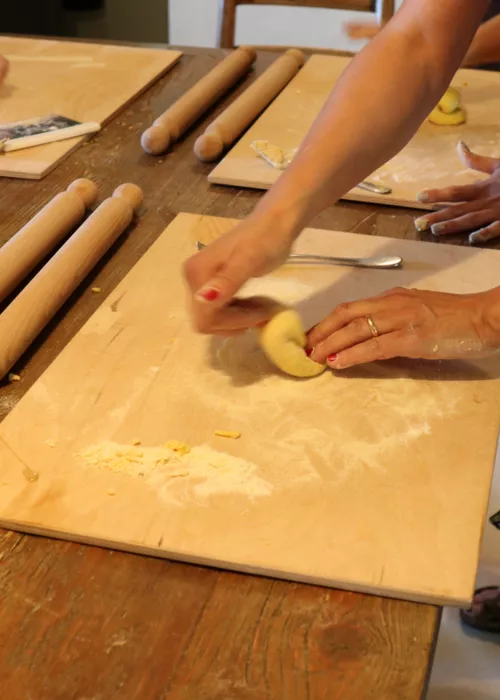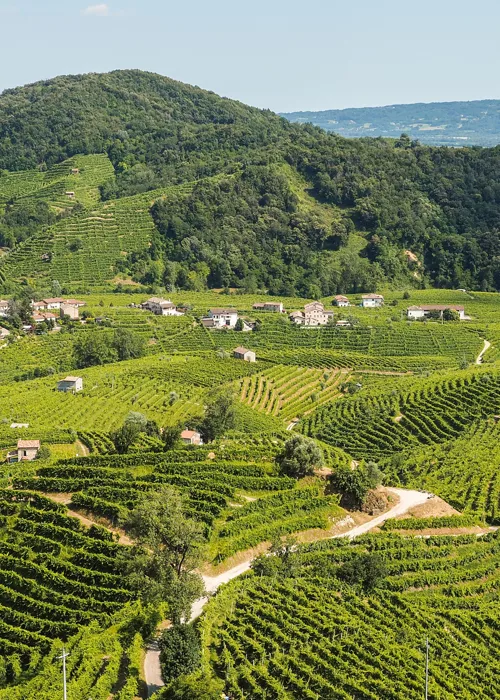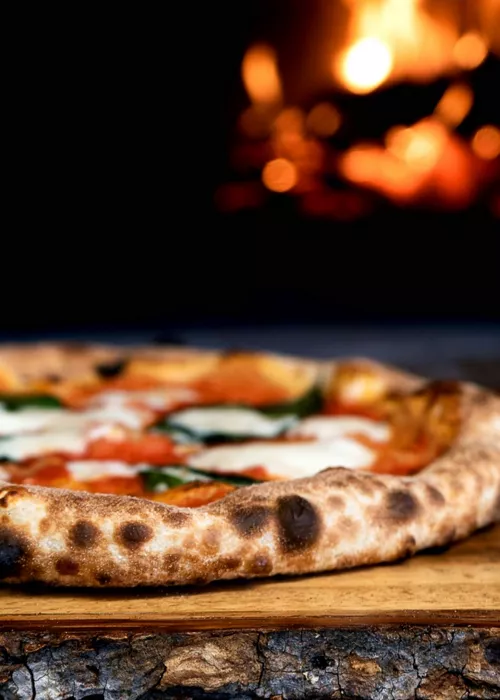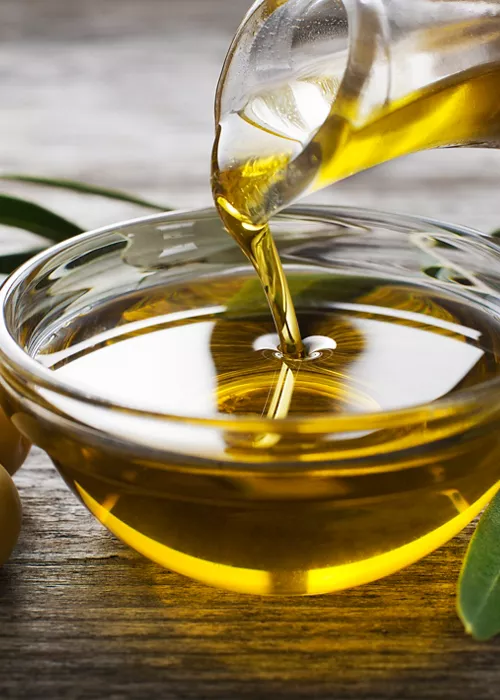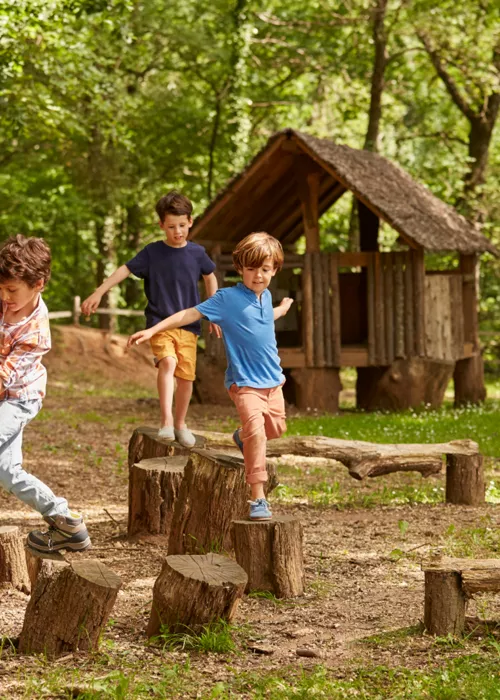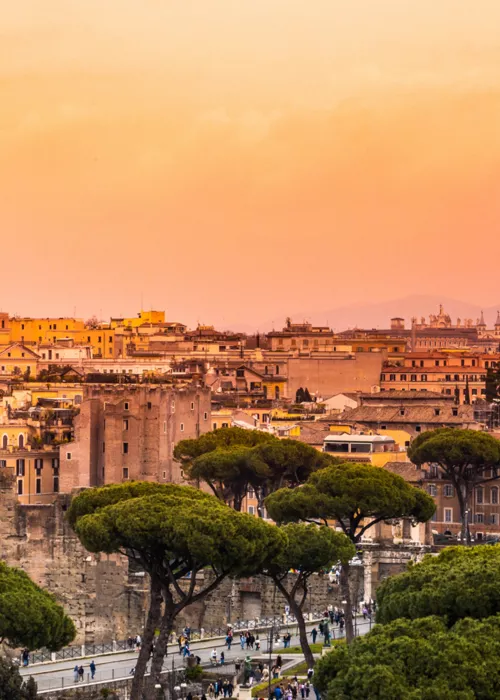Enotour of Easter
7 minutes

Easter is a time of joy and rebirth that is reflected not only in nature, but also in the souls of people. Tradition and conviviality meet at the table, between the aromas of seasonal ingredients and the rustling of recipe books that preserve ancient preparations handed down from generation to generation. Each of us has his own memories and customs for the Easter lunch, related to his family and his territory. Each stage of the Enotour is an invitation to discover not only the authentic flavors of each region, but also the many traditional rites that animate all over Italy, from cities to small villages, to meet new people and share unforgettable experiences with the winemakers during cooking classes, creative workshops, guided tours, treasure hunts and excursions among the vineyards organized by the Movimento Turismo del Vino. Because the true essence of Easter lies in the moments that are shared around the table.
Crescia Valdostana and a Petite Arvine glass for an Easter at high altitude

The Enotour among the typical gastronomic excellence of Easter begins in the smallest and northernmost region of Italy. The peaks of the mountains still wrapped in a blanket of snow alternate with beech forests and bright green meadows that are caressed by the warm smiles of spring. We are in Valle d'Aosta, a region that can boast postcard landscapes all year round but which, especially during this period, gives an atmosphere of true magic: between the huts the smell of wood burned in the fireplaces mixes with the scents of typical recipes ready to animate the tables on the day of resurrection.
Among the inevitable ones is the crescia valdostana, a leavened salty cake made with eggs, flour, grated parmesan and yeast. It is a local variant of the classic Easter pizza spread in different regions of central Italy and, despite sharing the name with the crescia marchigiana, the difference is already obvious: here the dough is softer thanks to the egg whites mounted on firm snow and then joined together with gentle movements and rotors so as to obtain a soft and elastic dough. A tasty and nutritious recipe, ideal to celebrate the end of Lent fasting, made even more delicious when served with salami and sausages typical of the area, and when accompanied by a glass of Petite Arvine. A fresh, brilliant wine made from a Valais grape variety, in Switzerland, but which finds its ideal land in this region. Also known as the glacier grape, for its ability to resist and express the best of itself at high altitude, the Petite Arvine gives life to white wines with a pleasant floral vein and typical notes of citrus and almond on the finish. Each sip is accompanied by a remarkable savor, given by the morainic soils rich in deposits left by glaciers, which give a unique character to the wine and combine well with the strong flavor of the crescia. A must for Valdostan families that symbolizes the joy of sharing moments around the table that then leave room for an excursion at high altitude, with a walk or horseback to the valley or with a trekking route through the vineyards in the company of MTV producers to discover the history kept inside each glass.
Torta Verde and Grignolino protagonists of Easter in Monferrato

The itinerary to discover the traditional Easter dishes, among great classics and less known recipes, continues down towards the hills of Monferrato, a fascinating corner for its breathtaking landscapes and for its enogastronomic tradition really enviable. Here the expanses of vineyards seem to dance alternating with majestic medieval fortresses that dominate the landscape and the small surrounding villages like Moncalvo which holds the record of "Smallest City in Italy" for its lively soul despite its modest extension, of just 17 square kilometers. Among the great grapes of the region stands out the Grignolino, an autochthonous vine that testifies to a secular wine tradition that can be seen in the Infernot, the cellars carved into the rock at Cella Monte, a municipality in the province of Alessandria, recognized as a World Heritage Site by UNESCO. Do not miss the nearby village of Rosignano Monferrato, certified with the Orange Flag for its high quality standards of the territory, where you can visit its castle on top of the fortress and its enchanting views of the vineyards. Less known than the great wines of structure that make the enology of Piedmont famous throughout the world, the Grignolino surprises for its elegance and freshness to the palate, which make it recognizable at the first taste. Notes of cherry, raspberry, a slight spiciness to the nose that leaves room for a dry taste, with tannins quite evident but still nice and a really pleasant sour vein that makes appreciate even the most long-lived versions. An intriguing wine already young but that with aging gives pleasant balsamic notes that are well matched to the herbaceous component of the Monferrina cake, one of the main recipes of the Piedmont tables in the Easter period. The seasonal ingredients make this recipe unique: beets, dandelions, nettles and other field herbs are blanched for about ten minutes and then added to the rice, cooked al dente in a saucepan using the cooking water of the vegetables. Then add grated parmesan, eggs, salt, pepper and, among the aromas, rosemary, fresh marjoram and parsley.
At this point, the mixture is placed in a greased casserole and sprinkled with breadcrumbs and is ready to bake until it is golden brown. Even before tasting it, you can feel that the torta verde Monferrina tells a peasant cuisine that values genuine ingredients and moves with the rhythm of the seasons. Each family has its own recipe: sometimes you add lard or bacon to make everything more tasty, but the ingredients vary according to the availability of the garden and herbs that can be found in nature. There are, in fact, many variations of the torta verde to be prepared with the producers of the Movimento Turismo del Vino within the cooking courses organized in their facilities. Before getting to the stove, guaranteed fun in nature excursions to recognize and collect the wild herbs of the area, for an experience in the cellar that is not only tasting, but also relaxation and well-being.
La Colomba di Pavullo e Romagna Albana for a typical Easter in Emilia Romagna

In this route of flavors cannot miss the Emilia Romagna, a region that boasts a heritage of typical recipes and wines of excellence appreciated all over the world and gives its best even during Easter. Among the most characteristic desserts stands out the Colomba di Pavullo, a peeled cake that takes its name from the homonymous village at the foot of the Modena Apennines. Its unique flavor comes from the Savòr a cooked must compote traditionally prepared by the winegrowers during the harvest, sometimes with the addition of seasonal fruit, orange peel and cinnamon. A real treasure of peasant cuisine originally kept inside terracotta damigiane to preserve it in the harsh winter months. This jam is the heart of the filling along with pine nuts and raisins that enrich each soft layer.
The uniqueness of the Colomba di Pavullo also lies in a triple leavening: a first dough of flour, milk and sourdough is made and left to rise between eight and ten hours, At the end of which you add the remaining flour and milk and then leave to rest for another 4 hours. After the second leavening, add the eggs, sugar, soft butter, lemon zest and a touch of Marsala to flavor. At this point, the dough is spread on a rolling pin to obtain not too thin discs that will alternate in the baking pan with the filling of Savòr obtaining several layers until the dough ends which will rest again and then go to cooking in the oven. A meticulous preparation and a long leavening that contribute to the pleasant friability of the sheets obtaining a golden crust and a soft interior sweet, aromatic and never stale. A cake that recalls Easter at first glance, maintaining the traditional shape of the dove and finding its perfect companion in a glass of Romagna Albana, the king of sweet wines of the region overlooking the vineyards that from the interior look at the Adriatic sea and that, In recent years, it is also expressed well as a classic method. Bright, soft and enveloping on the palate, Romagna Albana surprises with hints of ripe peach, citrus, honey and a strong mineral vein that gives a harmonious and fresh sip, balancing the sugary part of the sweet and enhancing the aromas. An elegant combination that embraces the whole region, from the heart of Emilia to the soul of Romagna, able to make every moment of celebration special. With the producers of the Movimento Turismo del Vino, the experience in the winery begins with the tasting and continues with creative workshops and crafts to make decorations and gifts on the theme of wine to give to friends or loved ones so as to entertain everyone, From the big to the little ones.
To discover the wineries of Movimento Turismo del Vino visit: https://movimentoturismovino.it


